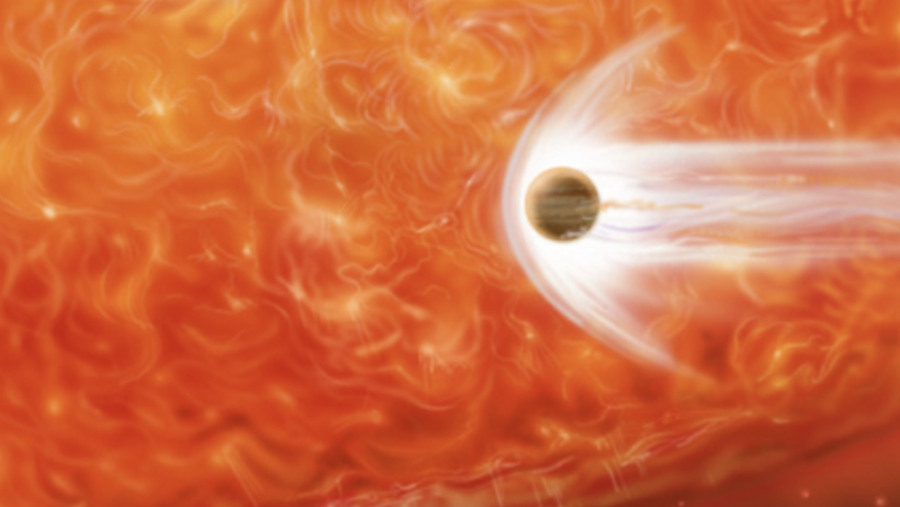Stars Can Devour Planets And Astronomers Have Seen It Happen

Five billion years from now, after our sun exhausts its nuclear fuel and starts to expand into a red giant, it will swallow our planet whole on its way to becoming a white dwarf. Just a comforting thought to keep you up at night.
This process has been a long-accepted model of a solar system’s life cycle but has never actually been confirmed by observation. Now astronomers believe they have caught a red giant in the act of eating one of its planets, giving us a unique insight into the fate of planet Earth for the first time.
A multi-national team made the discovery while observing the red giant BD+48 740 with the Hobby Eberly telescope in Texas. To catch a star in the act of eating its own planets is no small feat, as the process happens relatively quickly in cosmic terms. But the team managed to infer it from a couple of tell-tale signs.
Spectroscopic analysis of the star’s composition revealed that it had an extraordinarily high amount of Lithium, a suspiciously rare element in the universe that is the subject of its own ongoing scientific investigations.
Stars tend to destroy Lithium pretty easily, so having a lot of it in a red giant sent up flags immediately. According to one of the team’s members, Alexander Wolszczan of Penn State:
Theorists have identified only a few, very specific circumstances, other than the Big Bang, under which lithium can be created in stars…In the case of BD+48 740, it is probable that the lithium production was triggered by a mass the size of a planet that spiraled into the star and heated it up while the star was digesting it.
The other piece of evidence supporting the planet-eating hypothesis is the highly elliptical orbit of one of BD+48 740’s remaining planets. The Jupiter-sized planet’s orbit is one of the most highly elliptical ones found yet. The planet’s orbit would seem to indicate that a gravitational disturbance caused by another planet falling into the star pushed it into the weird orbit it has today.
While this is likely the fate of our own world, don’t worry about your great-grandkids getting tossed into the sun. In only about a billion years, the gradually rising temperature of the Sun will probably make life all but impossible on our little rock anyway, so we’d be long dead as a species before it ever happened to Earth (fingers crossed that we figure out how to build a warp drive sometime before then).
See? Isn’t that much more comforting? We will be long gone before our Sun can truly have its way with humans. We’ll all have burned to a crisp well in advance of it happening.
Source: BBC News












